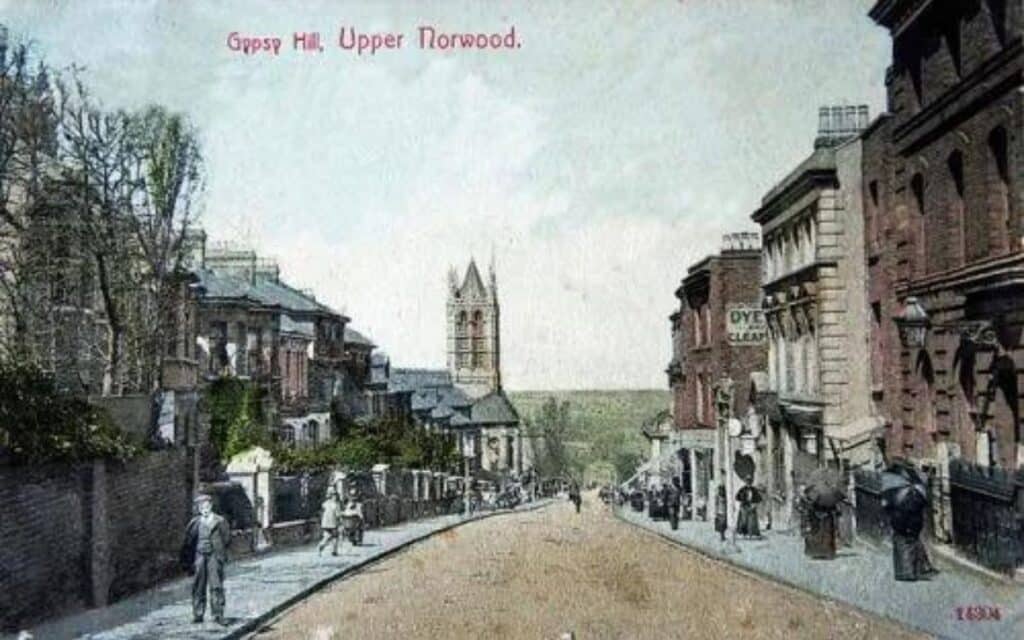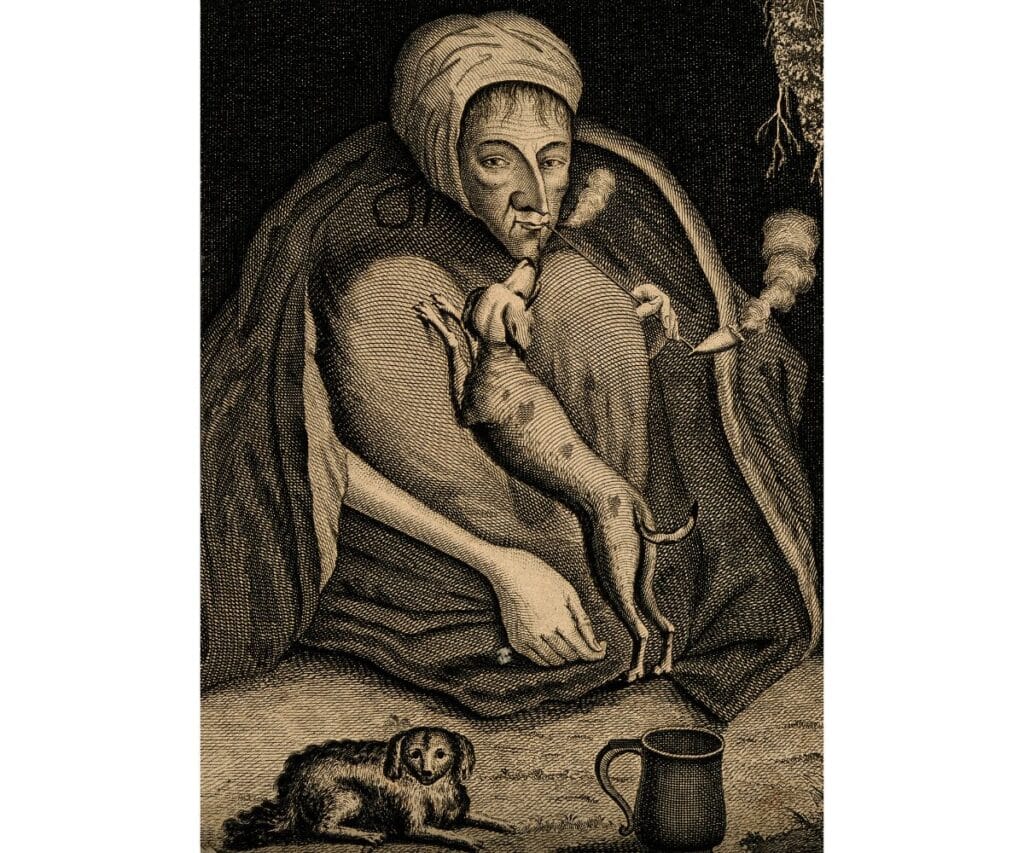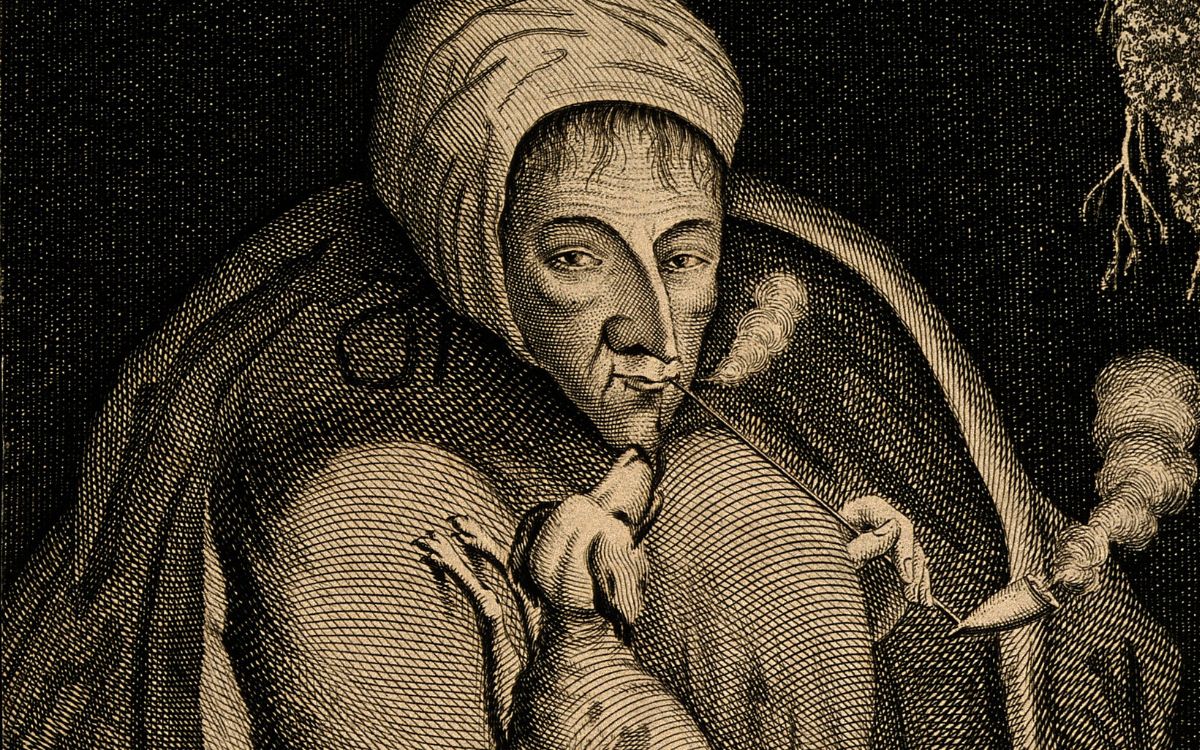ANN MASSEY tells us of her childhood links to the psychic Margaret Finch, aka the Gypsy Queen of Norwood, and how Gypsy Hill in South East London got its name!

Do you ever discover something about a place that either drew you in or terrified you as a child?
Medieval St George’s Parish Church in Beckenham, Greater London, was one of those locations for me. Whenever we would visit for a school outing, or my parents wanted to go to an event there, I could never get past the 13th century lychgate and would have to wait, sitting on the wall outside. Incidentally, did you know that the word ‘lych’ comes from the Old English word for corpse? It literally means ‘gateway for the dead’.
In adulthood, I discovered that one of the older graves in that churchyard that I was so afraid of, belonged to none other than the Gypsy Queen of Norwood, Margaret Finch.
Born in Sutton, Surrey in the mid 17th century, Margaret was born into a Roma gypsy tribe. The word ‘Rom’ actually means husband, but more interestingly, the word gypsy (also spelled gipsy in the past) comes directly from ‘Egyptian.’ The name derived from the dusky skin of the nomadic community, locals believing they came from the mysterious realms of Egypt. The Romani penchant for pagan beliefs, second sight, herbal remedies and cures adding to the mystique.
Of course with fear comes hate and despite no direct laws, the gypsies of London were often marginalised and moved forcibly from place to place. What they needed was a leader, a woman of power, both of this world and the unseen. In the 17th century, that woman was Margaret Finch, who became Queen of the Gypsies.
Who was Margaret Finch, the Gypsy Queen of Norwood?
Settling in Norwood, South East London, Margaret and her tribe earned a revered reputation among the gypsy tribes and they would come from far and wide to have matters of the community settled – the Queen’s word was gospel.
Her home was at the top of a hill, formerly known as `Beggar’s Hil.’ The name was changed to Gypsy Hill by locals, due to the community that had settled on their doorstep.
Her strange shaped hovel became a pilgrimage location for not only her kinsmen, but members of the settled community and those of the gentry. Samuel Pepys wrote of a visit to Margaret Finch in his diary. An entry on 11th August 1668 told how Pepys, his wife and other family members travelled to Norwood to see the famed gypsy psychic. Pepy’s himself did not enter, however his wife seemingly attended a reading. Members of the Royal Family were also said to have paid visits, allegedly including George II. The latter an irony, as he would ultimately be the reason for the Romani demise.

Such was Margaret’s pull of the crowds each Sunday, local businesses thrived, particularly the public houses. So what exactly was the gift of the Gypsy Queen?
From a political standpoint, she was fair and wielded authority by her very aura, as others would wield a sword. The Queen had so much power, only she could select the individuals called up to the Council of Elders and she held a tight rein over them.
Margaret was more renowned, however, for her cures and remedies, from strange bottles and tied bundles, very similar indeed to Ireland’s Biddy Early. Unlike Biddy, Queen Margaret had such authority and standing, she was never once accused of witchcraft as fear turned to awe and hope as the years passed by and her importance grew.
Margaret’s greatest power was her gift of second sight and heightened intuition. While extremely capable in the arts of Divination, Crystals, Palmistry, dream interpretation and the reading of tea leaves, the Gypsy Queen was considered the ultimate psychic in her use of Cartomancy.
Using a standard deck of playing cards, she was able to foresee the future, reveal your darkest secrets, predict greatness or destroy your hopes and life. The pack she used was far more rudimentary than the 52 card pack we know today, however drawing something like the Queen of Spades could have you widowed or denounced as a Femme Fatale depending on how Margaret Finch read your cards.
As time passed, the stately demeanour of Margaret Finch that helped her selection as Queen, became grotesque. She withered, eyes sunken and wild, hands gnarly and nails becoming talons. Her skeletal frame began to fold in on her, as she maintained a position of crouching down, chin resting on her bony knees. A representation of her from John McCallum in 1851 shows the squatting Queen, familiars around her and clay smoking pipe by her side.
Gypsy Queen celebrated in place name and pub
At the time of her death, Margaret Finch was 109 years old and while her mind remained lucid and fluid with thought and sight, her body was not so forgiving. So much was her skeleton rigid and unyielding, the undertakers were unable to straighten the Queen out for her coffin and a large square box was made in haste. Margaret was set within it, crouching forever in death in the exact position she had maintained in life.
The local publicans felt they owed something to the deceased Queen and paid for her rather grand funeral. Taken by horse and carriage, the cube shaped coffin of Margaret Finch travelled through South London to Beckenham, at the time in County Kent. Margaret was buried in St. George’s Church Graveyard on 24 October 1740.
Following the death of the Gypsy Queen, her niece Bridget took the role but it was one short lived. She died soon after and the power of the Romani Tribes of London was broken. King George II introduced the Vagrancy Act of 1744 which meant that anyone not working for the ‘common wage’ was deemed a vagrant who could be whipped and imprisoned by local magistrates. The gypsy tribes of England were top of that list.
While the power of the gypsies declined, the imprint of Margaret Finch, Queen of the Gypsies has remained. In 1777, one of the most successful dramatic productions in Covent Garden was entitled ‘The Norwood Gypsies.’ John Keats immortalised the Queen in verse and to this day, amethyst crystals are left in the lychgate at St. George’s Church in Beckenham as a mark of respect.
Of course if your family comes from South London and you bear the surname of Finch, Lee or Cooper, you could be a descendant of the Queen or one of her tribe. You can also follow her trail with a visit to the bustling town of Sutton, a stroll along Gyspy Hill or a visit to her grave in St. George’s Church. There was even a noted pub by the name of The Gipsy Queen dating back to the 1870s at number 20 Norwood High Street, which is now the Book and Record Bar.
Centuries may have passed, the importance of the Romani gypsies in society declined, however, there is no doubt that Margaret Finch was, and forever will be, the Gypsy Queen of Norwood.


